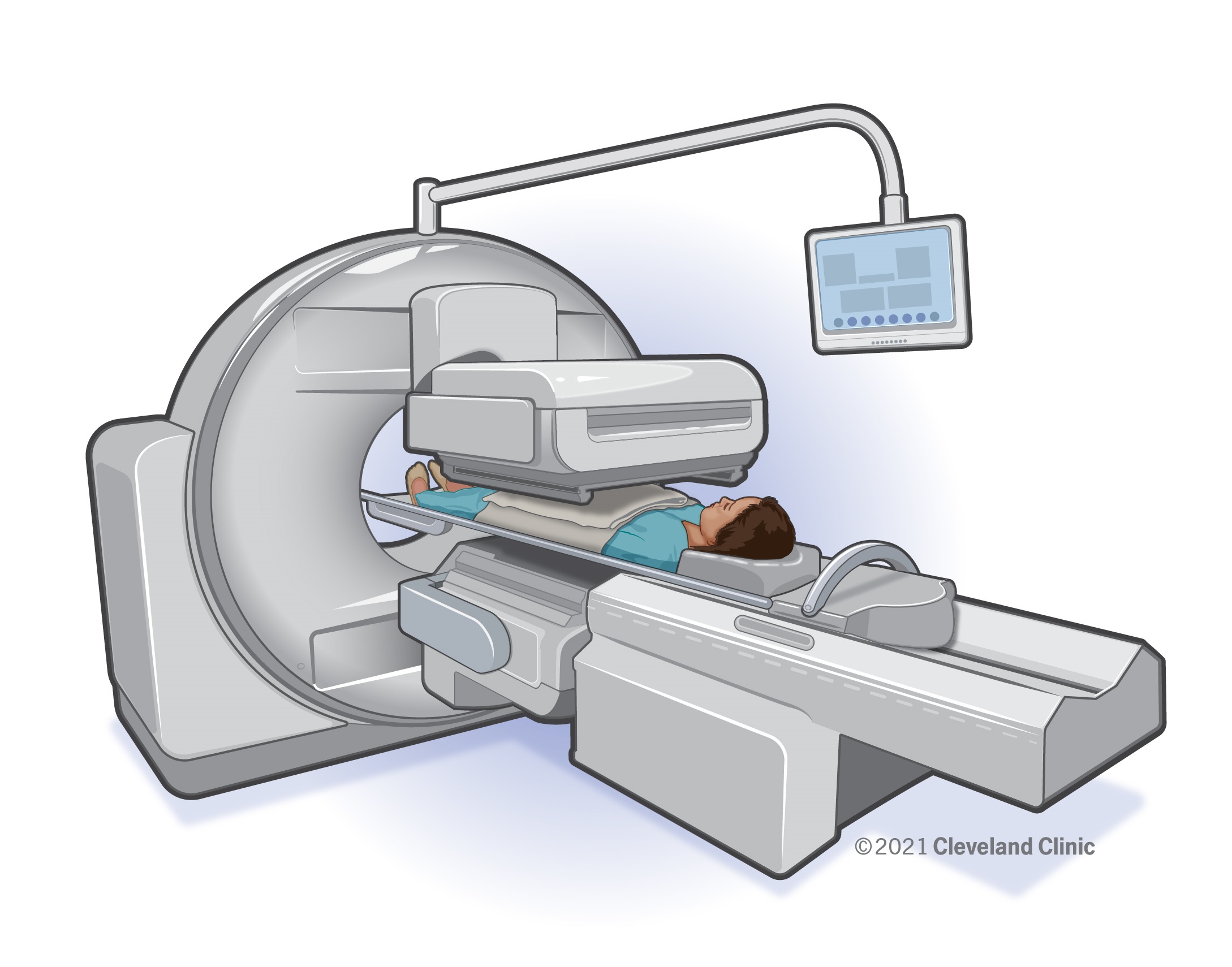Nuclear imaging is a way for healthcare providers to understand how your organs are working and diagnose diseases. Providers use a radioactive tracer to label areas inside your body. A special camera detects the labels to create images. Nuclear imaging can diagnose cancer or conditions that affect your heart, thyroid, gallbladder and other organs.
Advertisement
Cleveland Clinic is a non-profit academic medical center. Advertising on our site helps support our mission. We do not endorse non-Cleveland Clinic products or services. Policy
Nuclear imaging is a way that healthcare providers can get pictures of your insides by using a tiny label that highlights parts of your body (radioactive tracer). The labels in the tracer are so small — single atoms — that you can’t see them. But a special camera can take pictures or video of where it goes.
Advertisement
Cleveland Clinic is a non-profit academic medical center. Advertising on our site helps support our mission. We do not endorse non-Cleveland Clinic products or services. Policy
Nuclear imaging can show your provider how your organs work or where specific cells are in your body. It uses very low levels of radiation that leave your body within about a day when you pee.
Healthcare providers use nuclear imaging tests to get information about:
Nuclear imaging can help diagnose cancer or issues with your:

PET scans and SPECT scans are some of the most common types of nuclear imaging. Other nuclear imaging tests include:
Nuclear imaging tests use radiotracers (radioactive tracers) to label parts of your body, like specific cells or fluids, that your provider wants to see. The radiotracer enters your body when:
A camera may be able to detect the tracer immediately or you may need to wait several hours or a full day before getting imaging. Then, you’ll lie on a table while a special camera detects the radiation from the labels attached by the radiotracer. A nuclear medicine physician interprets the images and reports the results to your provider.
Advertisement
How you prepare for your nuclear imaging test depends on which test you’re getting. In general, you should wear comfortable clothing (a provider may ask you to change into a gown) and avoid wearing jewelry.
Each test has its own preparation requirements. For example, your provider may have you not eat or drink, except for water, for six hours before the test until the test is complete. For some scans, you have to swallow a pill several hours before the test. But some tests have no preparation requirements. Ask your provider if you have any questions about how to prepare for a specific test.
While each test is a little different, the general steps of a nuclear imaging test include:
How long the test lasts depends on the type of test you’re having. In general, the scans themselves might take about 30 to 60 minutes. For some tests, you have to wait two to three hours or an entire day to let the tracer absorb. This means you might have to come back to the hospital or testing facility more than once to complete the test.
After the test, you can usually go back to your usual activities and normal diet immediately. Sometimes, even low levels of radioactivity can show up on airport security scanners or other very sensitive radiation detectors. For this reason, your provider may give you a card for proof that you’ve had this test, in case you need to travel soon afterward. Scanners shouldn’t detect any radioactivity after 24 hours.
Risks of nuclear imaging tests include:
The risk for allergic reaction is low. Let your provider know about any allergies and if you’re pregnant or breastfeeding.
It usually takes a few days to a week to get the results of nuclear imaging tests. Your provider will review your results and let you know what the next steps are.
Contact your healthcare provider if you have any questions about how to prepare for the test or what the results mean.
Advertisement
Nuclear imaging tests give your provider important information about what’s going on inside your body. While radioactive scans might sound scary, the level of radiation you’re exposed to is very low and not harmful. And they give your provider the most accurate information to make a diagnosis and determine the best treatment. Talk to your provider if you have any concerns before or after the test.
Advertisement
When you need a clear picture of what’s happening inside your body, the Cleveland Clinic imaging team is here for you.

Last reviewed on 12/17/2025.
Learn more about the Health Library and our editorial process.